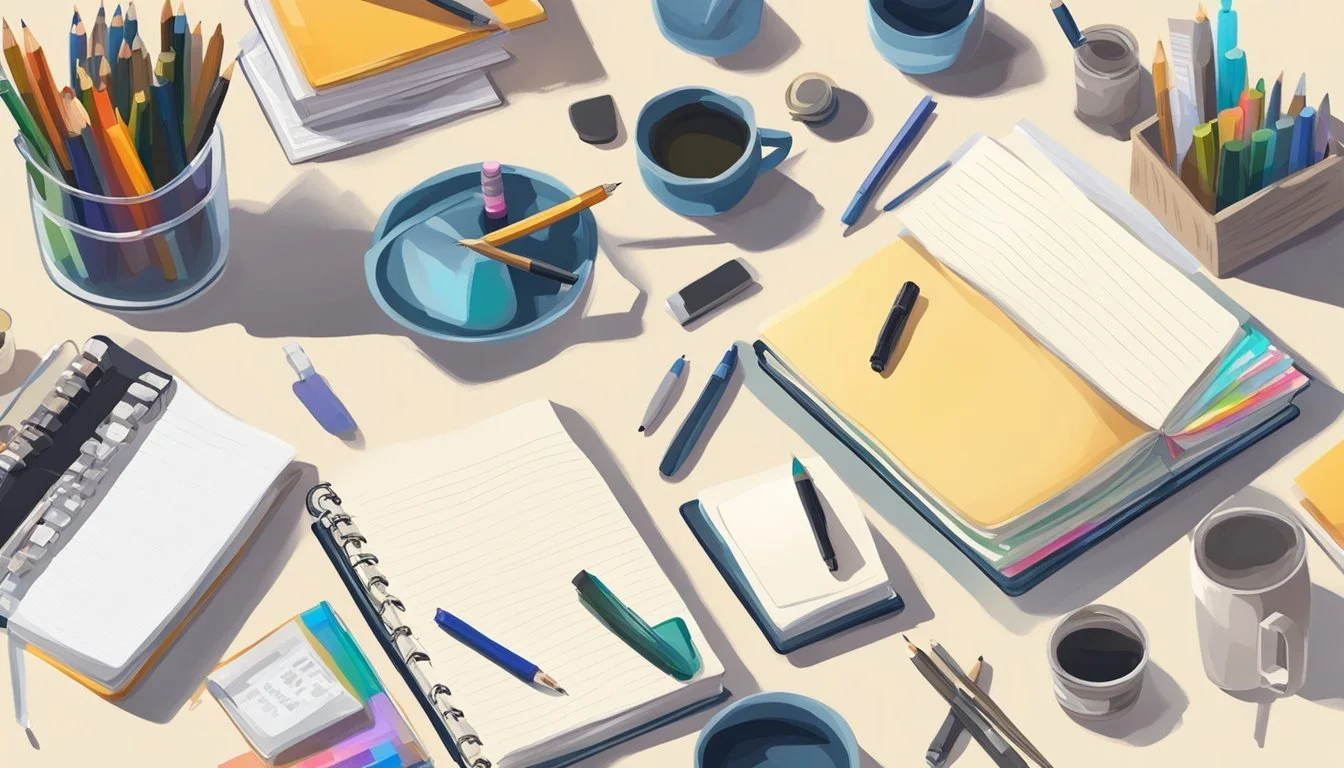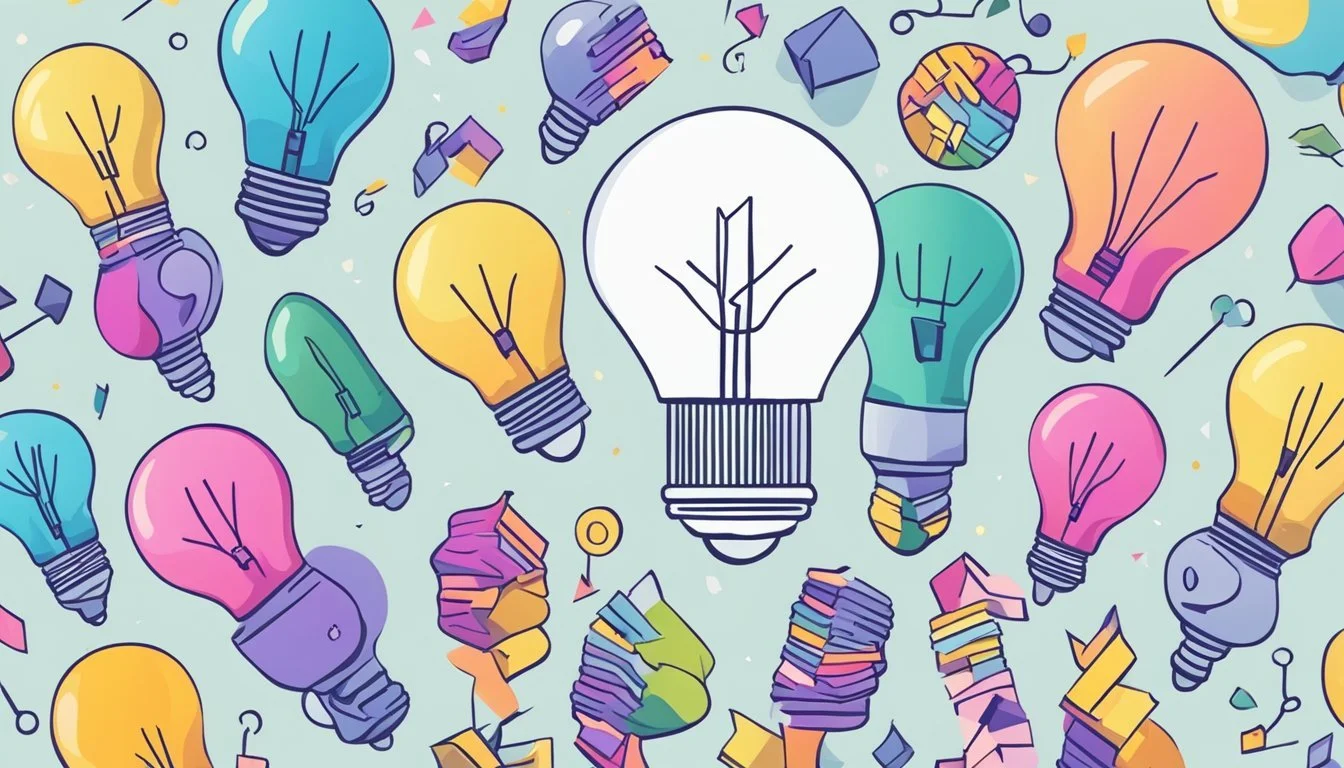5 Ways to Develop Creative Thinking Skills: Unlocking Your Innovative Potential
Creative thinking skills are essential in today's fast-paced world, where innovation and unique problem-solving abilities can set individuals and organizations apart. These skills encompass the ability to look at challenges from different perspectives, generating novel ideas, and finding unexpected solutions.
Enhancing creative thinking can lead to more effective decision-making and greater adaptability in various situations. By developing these skills, individuals can unlock their full potential, fostering a more dynamic and innovative environment in both their personal and professional lives. Learning practical ways to nurture creativity is crucial for anyone looking to thrive in our increasingly complex landscape.
1) Mind Mapping
Mind mapping is a powerful tool used to organize thoughts and ideas visually. This technique allows individuals to structure their ideas around a central theme, creating branches and sub-branches for related concepts.
One effective way to start is by placing the main idea in the center of the mind map. Then, draw lines to related topics, further branching out to detailed subtopics. This approach visually represents the connections between different ideas, making it easier to see the big picture.
There are several methods to enhance mind mapping. For instance, incorporating color coding can help differentiate various levels of information, making the map more engaging and easier to read.
Moreover, digital tools such as Miro and MindMeister offer templates and features that simplify the process. These tools allow users to create, edit, and share mind maps efficiently, fostering better collaboration and creativity among team members.
By using mind mapping, individuals can transform chaotic thoughts into an organized, visually appealing roadmap. It’s a technique that not only aids in generating ideas but also in finding solutions by visually laying out the problem and potential approaches.
2) Free Writing
Free writing is an effective technique to boost creative thinking. It involves writing continuously without worrying about grammar, style, or punctuation. This allows thoughts to flow freely and ideas to surface without self-censorship.
One method is to set a timer for a short period, such as 10-15 minutes. During this time, write whatever comes to mind, regardless of relevance or coherence. The goal is to keep the pen moving or the keyboard clicking.
Free writing can help break mental blocks. By removing the pressure of creating perfect content, it encourages the expression of thoughts that might otherwise be suppressed.
Changing the environment can enhance free writing sessions. Writing in different locations can provide new stimuli and fresh perspectives. For example, moving from a desk to a park bench can inspire different ideas.
Maintaining a regular free writing practice can cultivate a habit of thinking creatively. Even if what is written seems unimportant, the exercise itself strengthens creative muscles.
To get started, it's helpful to choose a prompt or choose to write about a particular topic. This ensures that the mind has a direction, but the freedom to diverge from the topic is always allowed and encouraged.
3) Daily Journaling
Daily journaling is a powerful tool to enhance creative thinking skills. By setting aside a few minutes each day to write, individuals can clear their minds and make space for new ideas.
One effective method is Morning Pages, a concept from Julia Cameron's book, The Artist's Way. This involves writing three pages of stream-of-consciousness thoughts each morning to remove mental clutter.
Writing poetry is another technique that can stimulate creativity. By experimenting with metaphors, rhymes, and similes, writers can explore new ways of expressing thoughts and emotions. Keeping a poetry journal can push the brain to think more creatively.
Using prompts can help overcome writer's block. Prompts provide a starting point and can lead to unexpected insights. Many resources offer a variety of prompts to cater to different interests and challenges.
For those seeking self-improvement, journaling can be a dialogue with oneself. By documenting thoughts, feelings, and experiences, writers can reflect on their growth and set new goals. This practice can lead to deeper self-awareness and innovation.
Daily journaling removes the inner critic, allowing a free flow of ideas. It creates a private space where individuals can explore thoughts without judgment. This freedom often leads to surprising and creative breakthroughs.
4) Creative Visualization
Creative visualization involves the practice of imagining desired outcomes in vivid detail. This technique can help engage the subconscious, providing direction and motivation towards achieving goals.
Individuals are encouraged to set aside specific times in their day for this practice. Morning or just before sleep are ideal times to visualize as the mind is more receptive.
Practitioners should close their eyes and create a mental image of their desired outcome. They should involve all related senses and emotions to make the experience as realistic as possible.
Regular practice can reinforce belief in achieving these goals, stimulating creative solutions and pathways. To make visualization more effective, breaking down goals into smaller, tangible steps can help maintain focus.
For more tips on visualization techniques, visit BetterUp.
By integrating visualization with other creative thinking strategies, individuals and organizations can harness greater creativity and productivity.
5) Brainstorming Sessions
Brainstorming sessions are essential for fostering creative thinking. They bring teams together to generate a diverse range of ideas. One effective technique is starbursting where a central idea is placed in the middle of a whiteboard, with questions branching out like a star.
Another popular method is brainwriting. In this approach, team members write down their ideas silently to ensure everyone contributes without interruption. This can lead to more innovative thinking as individuals are not swayed by others' opinions.
Combining asynchronous and real-time brainstorming can also be beneficial. This method begins with individual idea generation followed by a group discussion. It allows participants to think deeply on their own before exploring and expanding on ideas collectively.
Short, structured sessions like the 3-12-3 Brainstorm maintain energy and prompt fast ideation. Teams spend three minutes generating ideas, twelve minutes discussing them, and another three minutes refining the best ones. This time-focused approach ensures efficiency.
A mix of these techniques can significantly enhance a team's creative output. By leveraging different brainstorming strategies, teams can explore various perspectives and solutions, leading to more innovative results.
Cognitive Approaches to Creative Thinking
Cognitive approaches to creative thinking involve understanding different thinking styles and enhancing brain plasticity. These methods help foster creativity by utilizing and improving the brain's natural capabilities.
Understanding Divergent and Convergent Thinking
Divergent Thinking: This involves generating multiple ideas and solutions to a problem. It emphasizes creativity and open-mindedness. Techniques such as brainstorming, free writing, and mind mapping support divergent thinking. Divergent thinking allows for the exploration of many possible solutions, which can later be refined.
Convergent Thinking: This involves analyzing and narrowing down ideas to find the best solution. It requires critical thinking and evaluation skills. The process includes decision-making and logic to determine the most feasible and effective approach. Convergent thinking is crucial for applying creativity practically by focusing on viable outcomes.
Enhancing Brain Plasticity
Neuroplasticity: This refers to the brain's ability to reorganize itself by forming new neural connections. Engaging in varied activities, such as learning new skills, playing musical instruments, or solving puzzles, can enhance neuroplasticity. These activities stimulate different brain areas, leading to improved cognitive flexibility and creative thinking.
Physical Exercise: Regular exercise has been shown to boost cognitive functions. Activities like aerobic exercises increase blood flow to the brain, aiding neurogenesis (the growth of new neurons). This process supports better memory, learning capabilities, and creative problem-solving.
Mindfulness and Meditation: Practices like mindfulness and meditation help improve focus and mental clarity. They reduce stress and encourage a more relaxed state of mind, which is conducive to creative thought. These practices enhance the brain's plasticity by promoting a balanced and stable mental environment.
Environmental Factors Influencing Creativity
The environment plays a crucial role in fostering creativity. Factors such as a stimulating atmosphere and the reduction of mental clutter can significantly impact creative thinking.
Creating a Stimulating Environment
A stimulating environment encourages creative thinking by providing various sensory inputs and diverse experiences. For instance, incorporating natural elements like plants and natural light can enhance mood and cognitive function. Workspaces that include varied textures, colors, and interactive elements can inspire creative ideas.
Another important aspect is the presence of collaborative spaces. Meeting areas with flexible seating arrangements promote spontaneous discussions and idea exchanges. Access to diverse resources, such as books, art supplies, and technology, supports different ways of thinking and problem-solving.
Reducing Mental Clutter
Mental clutter can hinder creativity by overwhelming the cognitive load and causing distractions. Organizing the physical workspace is essential; a clean and ordered environment helps focus thoughts and reduces stress.
Digital clutter is equally important to manage. Limiting notifications and organizing digital files can prevent distractions and improve concentration. Techniques like mindfulness and meditation can also help clear the mind. Regular mental breaks have been shown to foster creativity by allowing the brain to rest and rejuvenate.
Reducing unnecessary tasks and delegating responsibilities can free up mental space. By managing time effectively and eliminating excess responsibilities, individuals can dedicate more energy to creative endeavors.
Techniques to Foster Creativity
Developing creative thinking skills involves specific techniques that can help unlock innovative ideas and new perspectives. Two effective methods include employing various brainstorming techniques and utilizing mind mapping tools to organize and expand thoughts.
Brainstorming Methods
Brainstorming methods are essential for generating a multitude of ideas in a short time. Traditional brainstorming involves a group setting where participants freely share ideas without criticism. This openness encourages a range of thoughts and solutions.
A popular variant is brainwriting, where individuals write down their ideas first and then share them with the group. This can help ensure that quieter members have their ideas heard.
Another effective method is SCAMPER (Substitute, Combine, Adapt, Modify, Put to another use, Eliminate, and Reverse). By asking questions based on these prompts, individuals can approach problems from different angles and generate creative solutions.
For more structured brainstorming, round-robin brainstorming allows individuals to take turns contributing ideas, ensuring everyone participates.
Mind Mapping
Mind mapping is a visual tool that helps organize information and ideas. It starts with a central concept and branches out into related topics, creating a web of interconnected thoughts.
To create a mind map, begin with a central idea placed in the middle of the page. From there, draw branches to subtopics, using keywords or short phrases. Each subtopic can further branch out into more specific details.
Color coding and using images or symbols can make the mind map more engaging and easier to understand. This technique is particularly useful for visual learners.
Mind mapping also aids in seeing relationships between different ideas, which can spark new insights and connections, thus stimulating creativity. For more on mind mapping benefits and uses, refer to guides that delve deeper into the technique.




